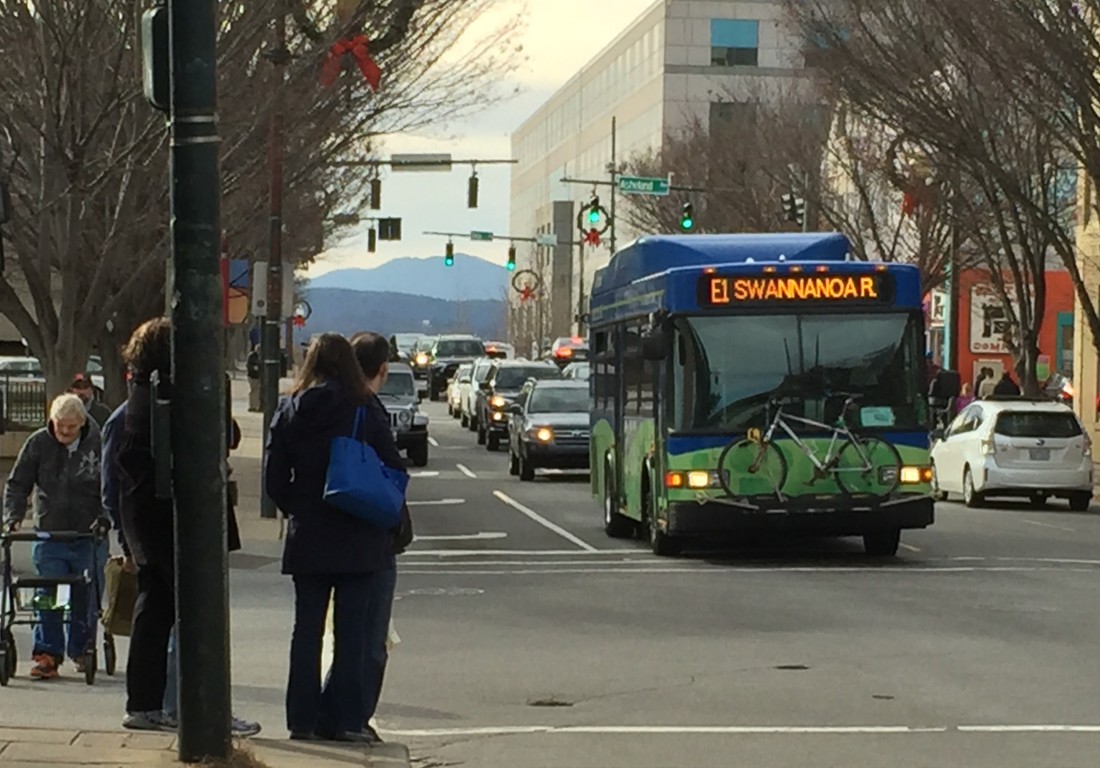Asheville’s human population growth has been matched by an increase in the number of vehicles on the region’s roads. Efforts to accommodate the resulting traffic — or move people around the city in different ways — were at the heart of many new developments in 2018.
- Interstate 26 Connector: Although the $950 million mega-project has been in the works since at least 1989, the design process neared completion at the end of this year. The N.C. Department of Transportation’s plan would ease the flow of vehicles, but many Asheville officials and residents believe it neglects the multimodal future of transportation, particularly on Patton Avenue.
- Transit Master Plan: Approved by Asheville City Council on July 24, the ambitious expansion of bus service would more than double Asheville Redefines Transit service hours and fleet size by 2029. Funding for the system, however, remains in question; the city has not yet allocated the money to pay for service increases previously slated to begin in July 2019, and the Buncombe County Board of Commissioners has been reluctant to commit its own resources.
- Charlotte Street road diet: Passions ran high over Asheville’s proposal to put Charlotte Street on a diet. City Council eventually approved a plan on Nov. 13 that will replace one lane of vehicle traffic with dedicated bike lanes and pedestrian improvements north of Chestnut Street, but some residents worried about the plan’s impact on congestion and accused Council members of catering to “elitist” pro-bike sentiment.
- Corridor studies: On Sept. 25, Council selected Tunnel Road as the guinea pig for a new approach to urban planning. Over a two-year corridor study funded largely by the French Broad River Metropolitan Planning Organization, city staff and consultants will explore “an alternative to the auto-oriented cycle” for the busy East Asheville thoroughfare. Meanwhile, the county will conduct a parallel effort for Hendersonville Road.
- Sweeten Creek widening: The NCDOT began its planning for an expansion of the major South Asheville route to four lanes, as well as a 10-foot multiuse path and 5-foot sidewalk. Community engagement is starting much earlier in the process than for the department’s widely criticized Merrimon Avenue expansion early this year.
- E-scooter regulations: For now, cars in Asheville won’t be sharing the road with electric scooters. After scooter-share company Bird flew onto city streets in October without consulting city government, Council got a temporary restraining order against the firm and proceeded to pass a ban on all e-scooters on Nov. 27.
- Parking changes: Asheville made it more expensive to park at city parking garages starting July 1. In an effort to raise additional revenue for its parking fund, the city eliminated its first-hour-free policy for those staying in garages longer than an hour. Parking fines were also more than doubled, with the changes going into to effect early next year.



It should be obvious our traffic issues stem from having too many cars on the road. The best solution is for everyone to drive less.
Unfortunately, cars are going nowhere. But, all improvements to existing and new infrastructure should include bike lanes and/or planning for pedestrian traffic.